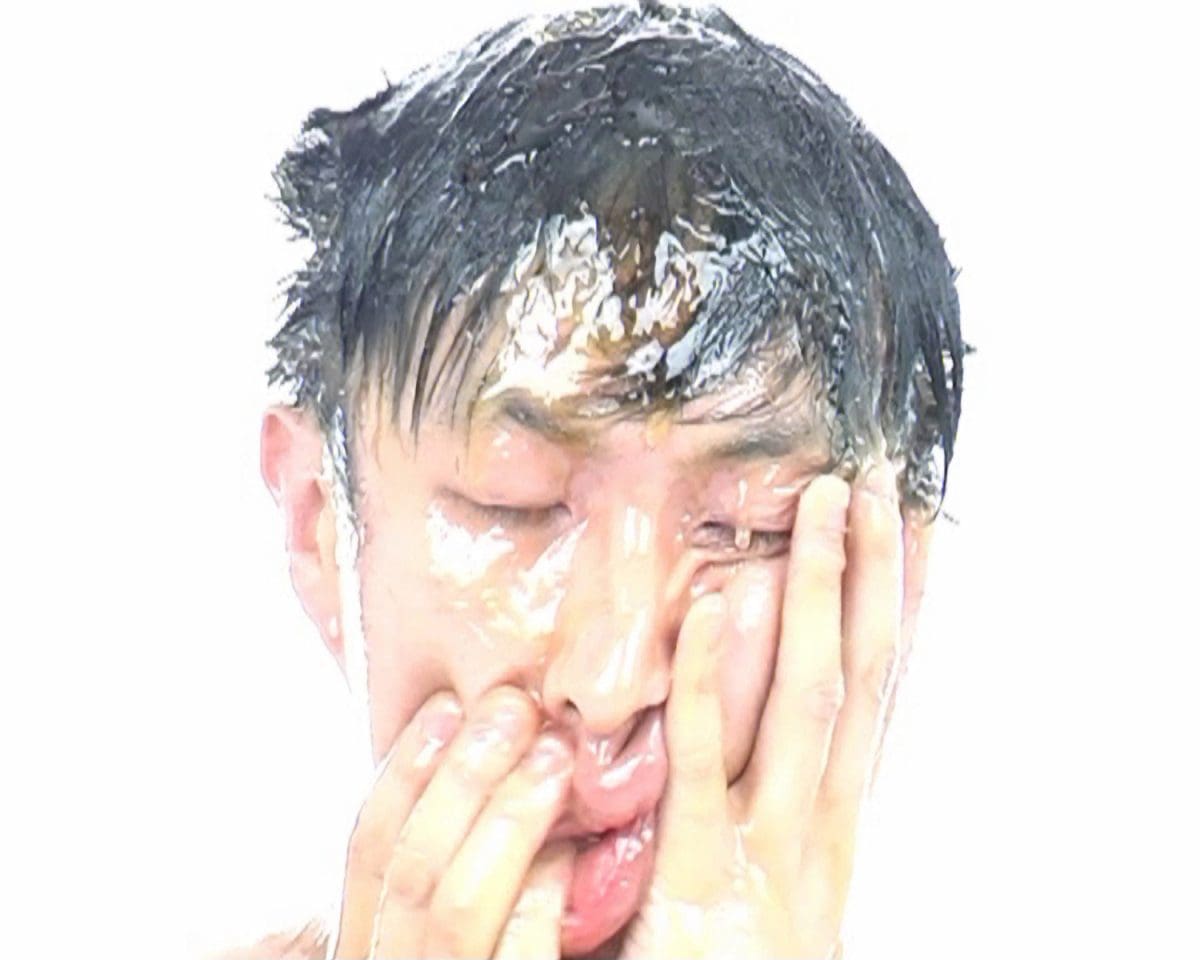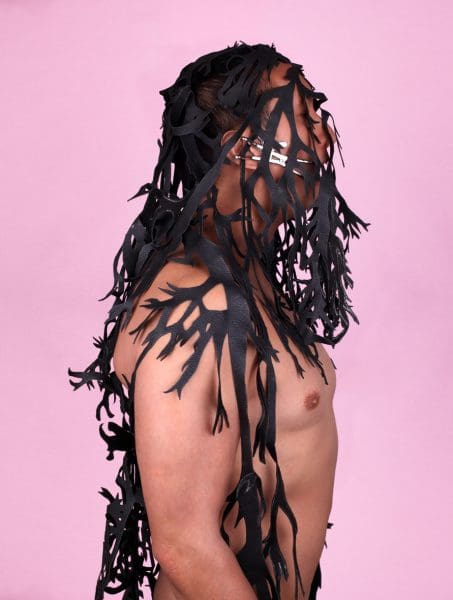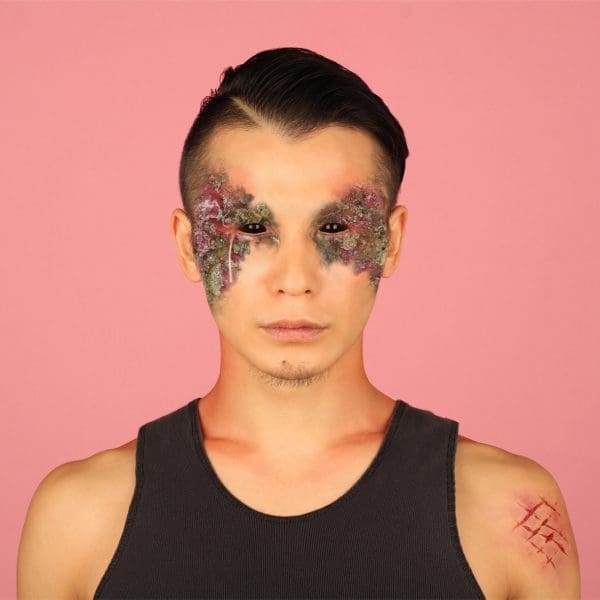
Piercing the veil
A new exhibition at Buxton Contemporary finds a rich complexity in the shadowy terrain between life and death.

Owen Leong, Second Skin, 2004, digital video, duration 11:04 mins, edition of 3. Private collections.

Owen Leong, Aura, 2014, archival pigment print on cotton paper, 120 x 90cm, edition of 5 + 2 AP. Courtesy the artist and Artereal Gallery, Sydney.

Owen Leong, Chi, 2010, archival pigment print on cotton paper, 70 x 70cm, edition of 5 + AP, from the series Birthmark. Courtesy the artist and Artereal Gallery, Sydney.

Owen Leong, Raina, 2010, archival pigment print on cotton paper, 70 x 70cm, edition of 5 + AP, from the series Birthmark. Courtesy the artist and Artereal Gallery, Sydney.

Owen Leong, Yasu, 2012, archival pigment print on cotton paper, 80 x 80cm, edition of 5 + AP, from the series Tidal Skin. Courtesy the artist and Artereal Gallery, Sydney.

Owen Leong, Hisae, 2012, archival pigment print on cotton paper, 80 x 80cm, edition of 5 + AP, from the series Tidal Skin. Courtesy the artist and Artereal Gallery, Sydney.
Owen Leong is known for his subversive homoerotic self-portraits. He was commissioned to make a new work for the group show, The Unflinching Gaze: photo media & the male figure, currently on at Bathurst Regional Art Gallery. Tracey Clement spoke with the artist about turning the lens on himself, turning the tables on the normative photographic gaze, and the impending marriage equality survey results.
Tracey Clement: The title of the show, The Unflinching Gaze, is obviously a nod to film theorist Laura Mulvey’s feminist theory of 1975 in which she noted that films tend to depict women as passive objects offered up to a male (heterosexual) gaze. How does your work subvert or play with this notion?
Owen Leong: The power of the gaze to reflect back the colonising or objectifying observer is empowering. In my early photographic works, I used prosthetics and digital manipulation to transform my figures with deep black eyes, so they stare defiantly back at the viewer. The figures in these photographs challenge the objectifying gaze; they are unflinching, resistant and unknowable.
More recently, I’ve used medical objects as symbols of power and classification to physically open up my body for the camera, to make visible the (often invisible) social structures in culture and society. In my work Aura, a surgical stainless steel device holds my mouth open, which symbolically silences while opening up the body as a passive receptacle. This device suggests medicalization of the body, hierarchies of classification and power. Aura attempts to make visible the transmission of social, cultural and political forces across the body.
I’ve always been interested in systemic flows of power, and how these forces are transmitted through society and culture. My work spans a range of visual languages, concepts and ideas dealing with identity and gender in Australian culture. I often use my art to create counter-narratives to hetero-normative masculinity and systems of power. I use my camera to construct alternative frames of reference and to refocus the legibility of bodies.
TC: Most of your work is self portraiture. Why are you your best model?
OL: I have used my own body in my photographic, video and sculptural works for almost 15 years. I have also used other bodies in my work, most notably in my Birthmark and Tidal Skin photographic series, but I have always worked exclusively with people of colour.
I find the use of my own body an effective way to reframe narratives of identity and culture. In Western popular culture, we see a prevalence of white bodies in print, still and moving images, film and stage. I use my camera and my body to destabilise this narrative and reframe the conversation, to re-centre people of colour at the centre of artistic dialogue. I use personal mythologies to explore identity and transformation. I’m interested in systems of power, culture and representation. I use the body, subjectivity and personhood to reflect on universal aspects of human nature.
TC: There is a strong homoerotic current running through your work; you yourself are offered up to a male gaze. How do you avoid becoming passive or objectified?
OL: There is definitely a strong homoerotic current running through my work, but I like to think of this current as a rip tide: it has the power to transport the viewer somewhere unexpected in its undertow. The shifting interplay of darkness and light, the unsettling and seductive, unfolds in self-portraits that transform my body through fictional selves to open a space for new identities to come into being.
As a queer person of colour, my body is political. Making art gives me agency. I am in control of the camera. I determine the frames of reference. I construct the composition through which my body is read. Through my art practice, I create counter-narratives to suggest new ways of being. I actively visualise systems of control, classification and hierarchies directly onto my body. These systems of power are more often than not invisible, unmarked and unseen. So my art-making is an act of witnessing these power structures, both for myself and for others.

TC: Your photo Resistance Training, 2017, was commissioned especially for the Bathurst show. What were your aims for this work?
OL: When I was commissioned to make this work, I knew it would be shown in the context of a 140-year history of the male nude. I wanted to acknowledge my specific relationship to the past and to my culture, but also reference our everyday lives in contemporary society today.
I’m intrigued by the ways in which desire and masculinities are constructed through the physicality of sport. The gym is a space filled with visual codes of strength, power, and dominance. Resistance training, or weight lifting, shapes the body to a paradigm of ideal masculinity. In the age of the #gymbro, where men’s bodies are rendered more visible than ever before in society and culture, the gym is a highly gendered space where hyper-masculine identities are performed and latent homoeroticism is sublimated.
TC: The title Resistance Training seems like a bit of a double entendre, not just a reference to gym culture. What else are you training to resist?
OL: Resistance Training disrupts a single coherent vision of the idealised white male body. This photographic work fuses my body with a Thousand Arm Guan Yin which is usually represented as feminine. This East Asian bodhisattva observes suffering in the human world and offers mercy, compassion and kindness. In my hybrid cultural mash-up, this fractured figure extends his multiple limbs to undress, hold symbolic objects, and lift weights: training in small acts of resistance. In a gay culture that often desexualises the Asian male body, there is a charged sense of eroticism as the white shirt is taken off.
Resistance is the refusal to accept or comply. It is the opposition to an established authority. Training oneself to resist is also a strengthening of the mind and spirit. It is a kind of artistic resistance to oppression, which destabilises the performance of masculinity.
TC: Have you been up to Bathurst to see the show? Which works made the strongest impression and why?
OL: I went to Bathurst for the exhibition opening. Richard Perram, director of the Bathurst Regional Art Gallery, has done an excellent job curating this exhibition and public program. It’s a complex show of over 200 photographic and video works by 62 artists spanning 140-years of the male nude.
I enjoyed the immersive salon style hang that creates connections across different periods of time, society and culture. This exhibition highlights the remarkable ways in which LQBTQI+ communities have expressed their experiences of sensuality, pleasure, survival and solidarity.
I am incredibly excited that the first performance video I ever made, Second Skin, 2014, is being presented in dialogue with Andy Warhol’s iconic Blowjob, 1964. These two works are exhibited together in a single room of the gallery, speaking to each other across space and time. The artistic energy between these two works is highly charged, wet, seductive and compelling.
There are also works about the male nude by non-LGBTQI+ artists. One of my favourites is Tracey Moffatt’s video Heaven, 1997, in which she uses a camera to film male surfers changing in a car park next to the beach. It’s presented without dialogue, just an unrelenting visual pursuit of male surfers and their beautiful taut bodies as they change out of their clothes. Sometimes the men appear flattered, playing with the camera and showing off their muscular bodies, while at other times they’re annoyed or frustrated by her attention, trying to cover up and hide. It’s a mesmerising objectification of male bodies through a female gaze and skirts dangerously between the boundaries of beauty, desire, consent, and predation.
TC: What are you currently working on?
OL: Earlier this year I was overseas for three months completing an artist residency in Hong Kong. Since getting back I’ve been completely focused on my commission for Bathurst Regional Art Gallery. Now that it’s complete, I’m excited to be back in the studio working towards my next commercial solo exhibition at Artereal Gallery, Sydney in July 2018.
TC: The marriage equality survey results will come in soon, care to offer a prediction?
OL: Personally, I voted yes. All my loved ones voted yes. It’s frustrating that the Federal Government abdicated its responsibility to do the job it was elected to do. The issue of marriage equality could have easily been resolved with a free conscience vote in parliament. It seems unfair and unjust that we have been dragged through a hurtful and expensive $122 million postal survey that is ultimately non-binding. The current situation has wide-ranging negative impacts on the community, especially young LGBTQI+ people who need our support and strength right now. For their sakes, and for future generations to come, I am hopeful the result will be a resounding YES. Regardless of the outcome, I think it’s important that we continue to champion equal rights and equal love.
The Unflinching Gaze: photo media & the male figure
Bathurst Regional Art Gallery
14 October – 3 December